Examining the 'Jesus Tomb' Evidence
By Jay Cost
Mon Mar 5, 11:30 AM ET
http://news.yahoo.com/s/realclearpolitics/20070305/cm_rcp/examining_the_jesus_tomb_evide
I. Introduction
In 1980 an ancient tomb was found in Talpiot, a Jerusalem neighborhood. It contained 10 ossuaries (bone boxes) dated roughly to the time of Jesus of Nazareth. One was inscribed "Jesus son of Joseph," two were inscribed with slightly different versions of "Mary," one with a slightly different version of "Joseph," one with "Matthew," and one with "Judah son of Jesus." Four bore no inscriptions and which went missing. Last night , Simcha Jacobovici, Charles Pellegrino, and James Cameron presented a Discovery Channel documentary that argues that this tomb belongs to Jesus of Nazareth (henceforth just Jesus), whom Christians believe is the resurrected Son of God.
The documentarians' claim is not valid. The Cameron-sponsored Jesus Family Tomb proffers a specious claim based upon bad theory, bad statistics, and bad history. A careful examination of their evidence demands that their claim be rejected.
II. Chemical Evidence?
Several years ago, an ossuary was found, independent of Talpiot that bears the inscription, "James son of Joseph, brother of Jesus." The antiquities dealer behind the "James" ossuary is currently on trial in Israel for running a forgery ring. Nevertheless, many scholars believe that the "James" ossuary is legitimate and that it will be vindicated. This is the position of the documentarians, who further claim that the "James" ossuary is the missing tenth ossuary.
Their evidence is twofold: (1) the size of the "James" ossuary is the size of the ossuary from Talpiot, and (2) the chemical residue, or patina, found on the "James" ossuary is consistent with the chemical residue on the ossuaries from Talpiot.
The second is peculiar. The documentarians claim to have developed a new procedure known as "patina fingerprinting." This shows a high correlation between the patina, or chemical residue, on the "James" ossuary and the patina from Talpiot. They infer from their procedure that they have "matched" the "James" ossuary to the Talpiot tomb. However, the data they provide falls far short of this claim. In their book, they report comparisons of the "James" and Talpiot patinas to eight patinas from other environments. Five of these are, according to the documentarians, not similar to the environment at Talpiot. However, all control samples should have been taken from a similar environment. It is a waste of time to test patinas known to have been from radically different environments than the "James" and Talpiot patinas. This is especially necessary considering that the type of soil at Talpiot - terra rosa - is not uncommon in Jerusalem. Indeed, the only appropriate test is to test patina from all places where terra rosa is known to be. Why waste time and resources on other environments? At least as far as their book goes, the documentarians tests are insufficient to prove that the "James" ossuary came from the Talpiot tomb.
In addition, one cannot in a single trial (a) test the validity of a new methodology and (b) apply it. How do we know the method is valid? It proved the two patinas to be similar. How do we know the two patinas are similar? The method proved it. This is circular, which is why the documentarians first must show that the "fingerprint" correctly identifies all sorts of items whose origins are known.
Generally, their reported results are far from convincing. There is nothing but anecdotal recounting, not the sort of systematic presentation of evidence required to make the claim they do. Furthermore, it is inappropriate to announce results like this to the general public, which lacks the expertise to evaluate the claim, without first having it thoroughly vetted by scholars and experts.
Thus, the documentarians only show that the "James" ossuary could be from this tomb. Beyond that, theirs is an argument from silence. Unfortunately for them, the record is not silent. Consider:
i. The Talpiot tomb was discovered in 1980. Just last month, a photograph dated prior to 1980 emerged that clearly shows the "James" ossuary.
ii. The earliest tradition regarding James indicates that he was buried near the Temple Mount, some distance from Talpiot.
iii. Ben Witherington, one of the principal scholars of the "James" ossuary, has statedthat the soil within the "James" ossuary does not correspond to the soil at Talpiot. Rather, it corresponds to an area that is consistent with the original tradition regarding the burial site of James.
iv. Two of the original archaeologists of the Talpiot tomb - Amos Kloner and Joe Zias - claim in no uncertain terms that the "James" ossuary is not the tenth missing ossuary. Instead, they say, the missing tenth was bereft of all inscriptions, names or otherwise.
v. Amos Kloner also claims that the tenth ossuary is a different size than the "James" ossuary.
vi. The documentarians largely rely upon Kloner's initial research into the ossuaries found at Talpiot, except when he disagrees with their thesis about the "James" ossuary. One cannot variably accept and reject a source based upon how well it supports one's claim.
III. Statistical Evidence?
The documentarians offer statistical analysis proving beyond a doubt - a 599 in 600 chance, they claim - that this particular tomb was Jesus'.
In actuality, this number is merely the reworked probability that any set of four people from the time will have four names - "Jesus son of Joseph," "Joseph," "Mary" and "Mary." It does not speak to the probability that this tomb was Jesus'.
Even so, it could, in theory, be helpful for indicating the number of candidates for this tomb who are as "qualified" as Jesus. Unfortunately, the theory upon which the calculation is based is hopelessly misguided. There are three major problems with it. (1) As I shall make clear later, there is no reason to include the second Mary in the calculation; and (2) this is a multi-generational tomb that could contain, according to New Testament scholar Richard Bauckham, up to 35 people. Thus, if one is interested in finding the population of people who are at least as likely as Jesus to be in this tomb, one must find the number of people named "Jesus son of Joseph" who would have at least two family members, out of 34, whose names correspond to the six names in the tomb. Finally, (3) it treats the incidences of "Jesus son of Joseph" and "Joseph" as independent events, which is not appropriate; the observation of one increases the likelihood of observing the other. The same also for the incidences of "Mary," which are not independent.
When these factors are considered, the following is clear: Virtually everybody named "Jesus son of Joseph" is as good a candidate for this tomb as Jesus. And, for that matter, a strong majority would be a better candidate. For instance, more than 97% of all people named "Jesus son of Joseph" would be expected to have at least two women named Mary among 34 relatives. When we factor all of the different ways to combine the five names in this tomb, we can be sure that this tomb could belong to anybody named "Jesus son of Joseph" -- at least 141 people from the time period. This, in turn, means that a majority would be a better candidate for burial because they would have more names than Jesus.
Can we actually derive a probability that this is Jesus' tomb? We can, if we consider the tomb in light of the historical record. It is relevant on two points.
First, it seems highly unlikely that Jesus would be a candidate for burial in this tomb. This is the case for at least six reasons.
i. Few scholars - including those who think Jesus was not bodily resurrected - believe that he was buried at all. There is good reason for this. The earliest testimony indicates that the tomb was empty. Later testimony is consistent with this. This testimony further indicates that all parties - the Romans, the Jewish temple authority, the Christians - agreed that the body had gone missing.
ii. Even if we assume that Jesus was buried, it is exceedingly unlikely that he would be buried in or around Jerusalem. Everybody had an interest in finding his body. It would have been a prize "get" for early Christian opponents - who were of course centered in Jerusalem - to produce it. How did they miss it when it was so close by? One would expect the Jesus family tomb, if it did exist, to be either in the north (the family's first century A.D. home), or in the south (the family's ancestral home). There is no reason to expect it to be in or near Jerusalem. Indeed, one of the contributing experts on this documentary, Professor James Tabor, the only one with academic credentials in New Testament studies affiliated with this documentary, just last year publisheda work asserting that Jesus was buried in Galilee.
iii. This pictureof the exterior of the tomb shows that it is ornately decorated. This tomb is not secretive. It is not possible to bury a person outside, but the Jesus in this tomb comes close. Again - how could Jesus, the production of whose body would have saved certain authorities many headaches, not have been unearthed from this tomb prior to 1980?
iv. Jesus' was a lower-class family from Galilee. Where did they acquire the resources to purchase what the original investigators call a tomb for a middle-class family?
v. The ossuary in question is unadorned. It bears only chicken-scratch writing that simply says, "Jesus son of Joseph." Most scholars consider Jesus minimally to have been a teacher, probably a healer, with a devoted following. Would his followers have treated him so shabbily in his internment, considering how much care was taken to anoint the body? Meanwhile, other ossuaries found at Talpiot are well-adorned, with names not so carelessly scratched into decorated ossuaries. Why would his followers give a more "worthy" box to others?
vi. The name on the ossuary, "Jesus son of Joseph," was not how followers addressed Jesus. As a matter of fact, this is what Jesus' opponents called him.
Second, the tomb includes people who, at least according to the historical record, should not be there and it lacks people who should be there.
There is no historical evidence of any kind that indicates that Jesus had a son named Judah or a close relative named Matthew. Actually, Jesus had two ancestors named Matthew. If we follow the genealogies in the Gospels Matthew and Luke, two great-grandfathers were named Matthew, but they would either have been buried in the north or the south. Interestingly, he did have a maternal aunt named Mary. However, the documentarians conducted mitochondrial DNA testing on remains from the "Jesus son of Joseph" ossuary and the second "Mary" ossuary. They found that the two are not matrilineally related. Thus, their hypothesis - that this is Jesus' family tomb - fails to account for three of the six ossuaries.
The documentarians argue that the specific spelling of the second "Mary" ossuary is consistent with a spelling of Mary Magdalene's name found only in the so-called "Acts of Philip," an apocryphal document produced sometime in the fourth century. Thus, they infer, she was his wife. However, the use of this document is not valid as an estimator of Mary's name. It was written some 200 years after she would have expired. How would the author of this know what she would have been called by her contemporaries? If he did know, why would prior writers - temporally closer to Mary - not use the same name? And, furthermore, while a few fringe scholars have suggested that Jesus and Mary were married, the overwhelming majority reject the thesis. Thus, one must conclude that the second "Mary" ossuary is a surprise.
Meanwhile, what about those who are missing? Where is his father Joseph? Where are his brothers, James, Simon and Jude? Where are his sisters? Where is his aunt? Of at least 9 people known to have been in Jesus' family, we only have three ossuaries. The "1 in 600" figure supposedly takes into account the missing names. The documentarians increase the base likelihood - 1 in 2.4 million - by a factor of four to account for what they call "unintentional biases" in the historical record. This is an ad hoc, insufficient, and inappropriate way to deal with the fact that 75% of his known family is missing. What is more, the extent to which this changes the probability is more than lost by the fact that they have included the second Mary in their analysis (which lowers the probability by a factor of 160). At any rate, there is a proper way to deal with the absence of six family members, and this is not it.
All of this contrary historical evidence has the potential to create a major problem for the documentarians. To see this, let us calculate the probability that this is Jesus' tomb with all of the information - for and against - now laid out.
We will use Bayes' theorem, which is a way to calculate the probability of a former event occurring (in this case the burial of Jesus in this ossuary) based upon the occurrence, or non-occurrence, of a latter event (in this case, the burial of the others in this tomb).
This is technical but bear with me. The documentarians take advantage, intentional or not, of the fact that the public does not understand statistics. Statistics themselves do not lie. They are only misused, which is what has happened here. To put things right, Bayes' theorem states:
Probability that this is Jesus' ossuary, given the other names equals
Probability that this is Jesus' ossuary multiplied by
Probability of finding the other names, given that this is Jesus' ossuary divided by
Probability of finding the other names.
It should be clear that the documentarians offer nothing approaching this. Their figure, 1 in 600, does not speak to any of these factors.
Examine the equation in light of our discussion of the historical record. Suppose that we found Jesus' ossuary in a tomb. What is the probability, based upon what we know about Jesus from the historical record, that he would be buried with these people? It is zero. There is no reason, independent of the tomb, to expect a Matthew, a son named Judah, or a second Mary. There is reason to expect at least six other names. Thus, the third term drops to 0. And, accordingly, the probability that this is Jesus drops to 0.
Now consider the probability that this is Jesus' ossuary, which is the probability that an ossuary found in this environment inscribed "Jesus son of Joseph" would belong Jesus. This term is 0, too. There is no reason, independent of the tomb, to expect him to have been buried at all -- buried in Jerusalem; buried in a middle class, ornamented tomb; and buried in an unadorned ossuary with this inscription. Hence, the second term drops to 0, too.
It is idle for the documentarians to speculate that it is possible for Jesus to have been buried in this tomb with these people. Such speculation has virtually no affect on the final result. Let us allow a 1% probability that he might be a candidate for burial in Jerusalem (in a tomb like this, etc.), and a 1% probability that he might be a candidate for burial with these strangers. Thus, we allow that it is possible that the historical record contains grievous and systematic errors that nobody has identified in nearly 2,000 years of digging, studying and reflecting. However - as they have no evidence to indicate that this is true - we assign a probability that is consistent with saying, "Anything is possible." With these allowances, we can say that the probability that this is Jesus is 1 in 1.4 million.
This probability is so low because it is unlikely that (a) Jesus would ever be found (b) especially with these five strangers. The probability that a given ossuary inscribed "Jesus son of Joseph" is Jesus' at all, which - even when we spot them a 1% chance that Jesus could be among the possible contenders for it - is only 1 in 14,100. What is more, when we spot them 1% that Jesus could be with these five people, the chances that Jesus' tomb could contain these five names is still only 1 in 57 million
Thus, I would assign a 1 in 1.4 million chance that this tomb belonged to Jesus. These odds are a little better than the odds that I will die in a tractor accident this year.
IV. Conclusion
Scientific method demands a careful, systematic weighing of all the evidence, for and against. The documentarians have not done this. They have systematically ignored the unfavorable evidence: (1) they ignored those who should not be in the tomb, (2) they did not properly consider those who should be in the tomb; (3) they ignored the strong likelihood that Jesus could not be buried in the tomb. Their method is essentially, "Evidence that favors the theory is included. The rest is excluded."
This is how a freak accident becomes a sure thing.
What they offer here is not science, but pseudo-science -- polemic dressed in scientific language. Numbers and "tests" are trotted out, but only for the sake of appearance. The hypothesis is never actually in danger because the falsifying evidence is excised before the evaluation begins. In other words, the rules of the game are: heads they win, tails you lose. The game was rigged from the start.

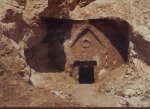
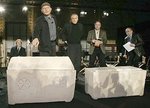






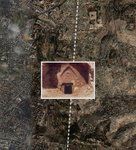


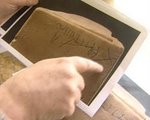






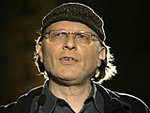

















No comments:
Post a Comment